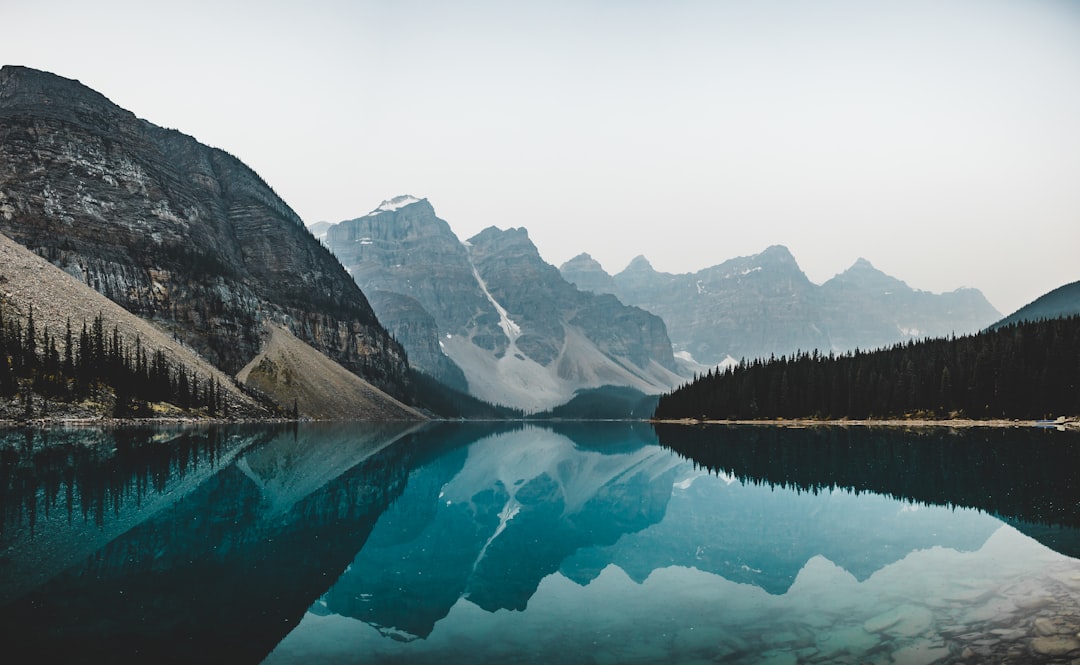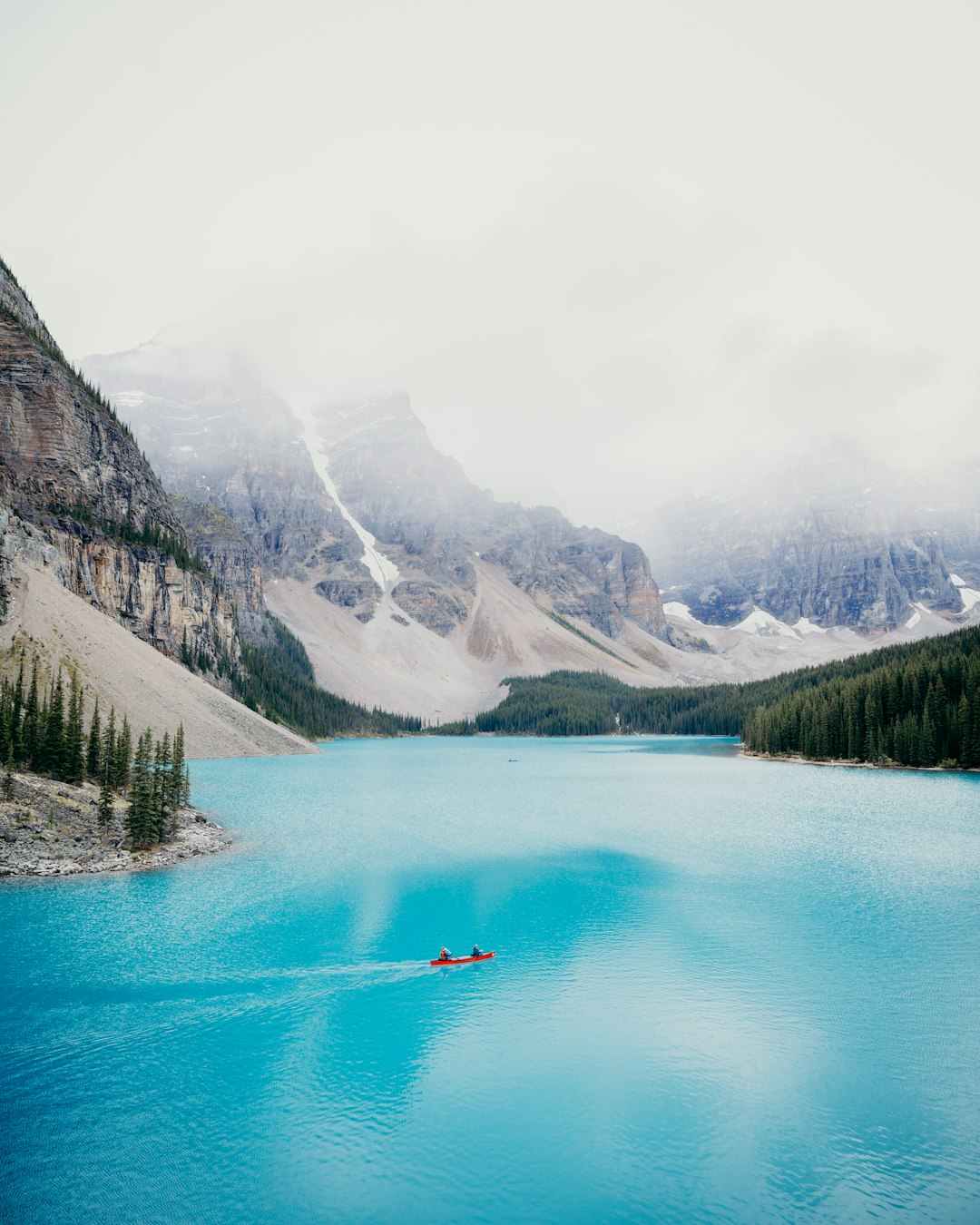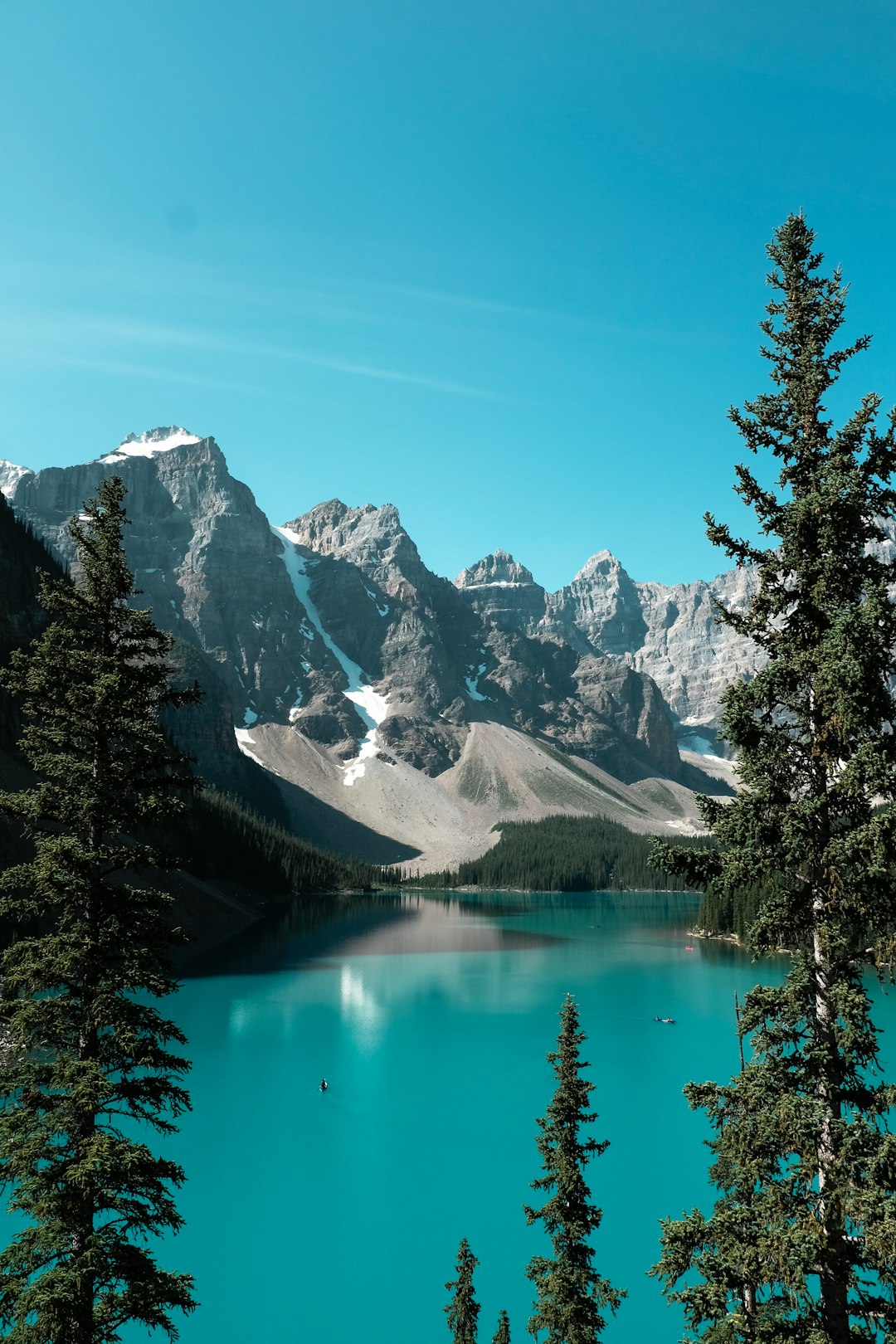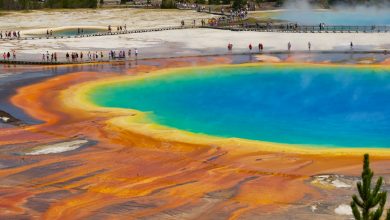Experience the Unspoiled Beauty of Banff National Park

Nestled in the heart of the Canadian Rockies, Banff National Park is a breathtaking natural playground offering a myriad of experiences for outdoor enthusiasts. From its rich history to its diverse flora and fauna, this UNESCO World Heritage Site captivates visitors with its unspoiled beauty. Whether you’re an avid hiker, wildlife enthusiast, or simply in search of tranquility amidst majestic landscapes, Banff National Park has something for everyone. In this blog post, we’ll uncover the allure of this iconic park, delve into its wonders, and provide you with valuable insights for a memorable visit.
The History of Banff National Park
The history of Banff National Park is as fascinating as the park itself. Here’s a brief overview of how this iconic park came to be:
- Establishment: In 1885, Banff National Park was established as Canada’s first national park, and the world’s third. Its creation was driven by the construction of the Canadian Pacific Railway. The park’s rich history as a protected area began more than a century ago, showcasing its significance as a natural and cultural heritage site.
- Significance: Banff National Park’s establishment paved the way for the conservation and preservation of natural landscapes, making it a pioneer in the global national park movement. Its historical importance cannot be overstated, as it serves as a model for the establishment of other national parks worldwide.
- Growth: Over the years, the park has expanded to protect a larger area of the Rocky Mountains. Its boundaries now encompass over 6,600 square kilometers of mountainous terrain, pristine wilderness, and diverse ecosystems.
- Heritage: The park’s history is deeply intertwined with Indigenous cultures, as the area has been inhabited by Indigenous peoples for thousands of years. Recognizing this, the park maintains a commitment to Indigenous partnerships and cultural preservation.
Visiting Banff National Park is not just a journey through awe-inspiring natural beauty; it’s also a walk through the annals of history, where the environmental conservation movement took root.
By understanding the history of Banff National Park, visitors can fully appreciate the significance of this UNESCO World Heritage Site and its ongoing role in environmental stewardship.
Remember, while the history of the park sets the stage for a memorable visit, it’s just the beginning of the experiences that await in this stunning natural wonderland.

Unique Flora and Fauna in Banff National Park
Banff National Park is home to a diverse range of flora and fauna, making it a paradise for nature enthusiasts and wildlife lovers. Here’s a glimpse of the unique natural elements you can encounter in the park:
- Flora: The park boasts a rich variety of plant life, including rare wildflowers, lichens, mosses, and towering pine and spruce trees. The subalpine and alpine meadows are adorned with vibrant blooms during the spring and summer months, creating a picturesque spectacle.
- Fauna: The park is inhabited by an array of fascinating wildlife, such as grizzly bears, black bears, elk, bighorn sheep, and mountain goats. Birdwatchers will be delighted by the sight of golden eagles, bald eagles, and the colorful plumage of the varied thrush.
- Distinctive Species: Banff National Park is renowned for being one of the few remaining sanctuaries for the endangered woodland caribou. These majestic creatures, along with the elusive wolverines and cougars, contribute to the park’s ecological significance.
- Comparison: The park’s unparalleled biodiversity provides a unique opportunity for visitors to witness the interconnectedness of various ecosystems within the region, creating a truly immersive experience.
As you explore the trails and wilderness of Banff National Park, keep in mind the importance of maintaining a respectful distance from the wildlife and preserving the pristine environment for future generations to enjoy.
Activities for Nature Enthusiasts
When visiting Banff National Park, nature enthusiasts will find an array of activities to immerse themselves in the unspoiled beauty of the park. Here are some activities that allow you to connect with nature and make the most of your visit:
- Hiking: Banff National Park offers a myriad of hiking trails suitable for all levels of hikers, from leisurely strolls to challenging ascents. Some popular trails include the Plain of Six Glaciers, Larch Valley, and Johnston Canyon.
- Canoeing and Kayaking: Immerse yourself in the tranquility of Banff’s pristine lakes by embarking on a canoeing or kayaking adventure. Paddle across the turquoise waters of Moraine Lake or explore the hidden corners of Lake Louise.
- Wildlife Watching: Keep an eye out for the park’s diverse wildlife, including grizzly bears, elk, bighorn sheep, and bald eagles. The wildlife viewing opportunities in Banff National Park are unparalleled.
- Photography: For photography enthusiasts, Banff is a paradise. Capture the breathtaking landscapes, the vivid colors of the wildflowers, and the dramatic mountain vistas.
- Stargazing: Experience the night sky in a whole new light. Banff National Park is a designated dark sky preserve, making it an ideal spot for stargazing and astrophotography.
Whether you prefer an adrenaline-packed adventure or a serene escape into nature’s embrace, Banff National Park offers activities that cater to every nature enthusiast’s preferences. Make sure to check the park’s regulations and guidelines to enjoy these activities responsibly and sustainably.
Exploring the Majestic Lakes of Banff National Park
Banff National Park is renowned for its breathtakingly beautiful lakes, each with its own unique charm and allure. From the vivid turquoise hues of Lake Louise to the serene emerald waters of Moraine Lake, the park’s lakes offer an unparalleled opportunity to immerse yourself in natural splendor.
Lakes of Banff National Park
- Lake Louise: This iconic glacial lake is famous for its crystal-clear turquoise waters and the striking backdrop of Victoria Glacier. Visitors can take a leisurely stroll along the lakeshore, rent a canoe, or enjoy a delightful afternoon tea at the historic Fairmont Chateau Lake Louise.
- Moraine Lake: Surrounded by towering mountains and stunning rock piles, Moraine Lake’s vibrant blue-green waters create a postcard-perfect setting. Hiking trails such as the Rockpile Trail provide panoramic views of the lake and the surrounding Valley of the Ten Peaks.
- Peyto Lake: Known for its unusual wolf-like shape, Peyto Lake offers a panoramic viewpoint that showcases its mesmerizing blue waters, caused by sunlight reflecting off glacial rock flour.
Comparing the Lakes
Here’s a quick comparison of the notable lakes in Banff National Park:
| Lake Louise | Moraine Lake | Peyto Lake | |
|---|---|---|---|
| Water Color | Turquoise | Blue-Green | Bright Blue |
| Key Attraction | Victoria Glacier | Valley of the Ten Peaks | Wolf-shaped lake |
| Popular Activities | Canoeing, Hiking, Tea House | Hiking, Photography | Scenic Viewpoint, Photography |
Conclusion
Exploring the majestic lakes of Banff National Park is a must-do experience for any nature lover or outdoor enthusiast. Whether you’re seeking adventure, tranquility, or simply a feast for the eyes, the park’s lakes offer an unforgettable connection to the unspoiled beauty of nature.

Hiking Trails for All Levels
Banff National Park offers a plethora of hiking trails suitable for all levels of hikers, from beginners to experienced trekkers. The park’s diverse landscape, including towering mountains, serene lakes, and lush forests, provides the perfect backdrop for an unforgettable hiking experience. Here’s a breakdown of the hiking trails for different skill levels:
Beginner Trails
For those new to hiking or looking for a leisurely stroll, Banff National Park has several easy trails that showcase the park’s natural beauty. Some of the popular beginner trails include:
- Lake Agnes Trail: This picturesque trail leads to the stunning Lake Agnes, offering breathtaking views of the surrounding mountains and a charming teahouse.
- Johnston Canyon: A well-maintained trail that meanders through a lush canyon, featuring beautiful waterfalls and unique rock formations.
Intermediate Trails
Hikers seeking a bit more challenge will find an array of intermediate trails that offer a moderate level of difficulty. These trails often involve elevation gain and longer distances. Some intermediate trails include:
- Plain of Six Glaciers: This trail rewards hikers with stunning views of glaciers and the opportunity to spot wildlife along the way.
- Parker Ridge Trail: Known for its panoramic views of the Saskatchewan Glacier and surrounding peaks, this intermediate trail is truly remarkable.
Advanced Trails
Experienced hikers can tackle more challenging routes that take them to higher elevations and offer rugged terrain. Banff National Park presents a selection of advanced trails, such as:
- Sentinel Pass: This demanding trail offers unparalleled views of Larch Valley and Paradise Valley, making it a favorite among seasoned hikers.
- Mount Temple: A strenuous ascent to the summit rewards hikers with awe-inspiring vistas of the surrounding mountain ranges.
Whether you’re seeking a leisurely jaunt or a strenuous trek, Banff National Park’s hiking trails cater to all levels, promising unforgettable experiences and a deeper connection with the park’s pristine natural wonders.
The Charm of Winter in Banff National Park
Winter in Banff National Park is truly a magical experience, offering a serene and pristine landscape blanketed in snow. Here, visitors can partake in a variety of winter activities that showcase the park’s breathtaking beauty in a completely different light. From snow-capped mountain peaks to frozen lakes, Banff National Park transforms into a winter wonderland, providing an array of unique and enchanting experiences for all.
Here are some of the wonderful aspects of experiencing winter in Banff National Park:
- Snowshoeing and Cross-Country Skiing: The park’s vast network of trails becomes a winter playground for enthusiasts of these activities. Travelling through the glistening snow-covered forests and meadows, visitors can truly appreciate the tranquility of the park during the winter season.
- Ice Skating: For a quintessential winter activity, lace up your skates and glide across the smooth, frozen surfaces of picturesque lakes such as Lake Louise and Lake Minnewanka.
- Skiing and Snowboarding: The park is home to world-class ski resorts, including Lake Louise Ski Resort and Sunshine Village, offering exceptional slopes for both beginners and advanced skiers and snowboarders.
- Snowy Scenic Drives: The Icefields Parkway, often referred to as one of the most scenic drives in the world, takes on an ethereal beauty during the winter months, with snow-draped mountains and frozen waterfalls along the route.
Banff National Park’s winter season allows for a unique and captivating experience, drawing in visitors who seek to embrace the tranquility and splendor of this snowy wonderland.
Wildlife Viewing Opportunities
When visiting Banff National Park, be prepared to immerse yourself in the fascinating world of wildlife. The park is home to a diverse range of animal species, making it a paradise for wildlife enthusiasts. Here are some of the incredible wildlife viewing opportunities you can experience:
- Majestic Elk and Deer: Witness the grace and beauty of elk and deer as they roam through the park. Keep your camera ready for the perfect shot of these magnificent creatures grazing in their natural habitat.
- Majestic Bears: Banff National Park is known for its population of black bears and grizzly bears. While it’s essential to admire these creatures from a safe distance, seeing them in their natural surroundings is an awe-inspiring experience.
- Bighorn Sheep and Mountain Goats: The steep cliffs and rocky terrain provide the perfect environment for these sure-footed animals. Keep an eye out for these impressive climbers as they navigate the rugged landscape with ease.
- Bird Watching: The park is a haven for bird enthusiasts, with over 260 species of birds recorded. From majestic birds of prey to colorful songbirds, Banff National Park offers a rich avian diversity waiting to be explored.
- Small Mammals: Don’t overlook the smaller residents of the park, such as marmots, ground squirrels, and beavers. Their industrious activities and playful antics add to the overall charm of the park.
Banff National Park provides unparalleled opportunities to observe wildlife in their natural environment. Remember to practice responsible wildlife viewing and adhere to park guidelines to ensure the safety and well-being of both the animals and visitors.

Tips for Responsible and Sustainable Tourism
When visiting Banff National Park, it’s essential to embrace responsible and sustainable tourism practices to ensure the preservation of this natural wonder. Here are some tips to help you make a positive impact during your visit:
- Pack in, Pack out: Respect the environment by carrying out all your waste. Avoid leaving any litter behind, including biodegradable items, as they can still disrupt the natural ecosystem.
- Stay on Designated Trails: Stick to marked trails and paths to minimize damage to the delicate flora and prevent soil erosion.
- Respect Wildlife: Observe wildlife from a safe distance and avoid feeding them. Remember, it’s their home, and interfering with their natural behavior can have harmful consequences.
- Choose Sustainable Accommodations: Look for eco-friendly and sustainable lodging options within or near the park to support businesses that prioritize environmental conservation.
- Minimize Your Environmental Footprint: Consider carpooling, using public transportation, or opting for eco-friendly tour companies to reduce carbon emissions.
- Support Local Conservation Efforts: Contribute to the preservation of Banff National Park by donating to local conservation organizations or participating in volunteer programs.
- Educate Yourself: Learn about the park’s history, ecosystem, and conservation efforts to gain a deeper appreciation for its significance and the importance of sustainable tourism.
By following these tips, you can enjoy the breathtaking beauty of Banff National Park while ensuring that future generations can continue to experience its unspoiled charm.
Best Time to Visit Banff National Park
When planning a visit to Banff National Park, it’s essential to consider the best time to make the most of your experience. The park offers unique and diverse experiences throughout the year, each season bringing its own highlights and activities. Here’s a breakdown of the best times to visit Banff National Park:
- Summer (June to August):
- The summer months are ideal for outdoor enthusiasts, with pleasant temperatures perfect for hiking, camping, and exploring the stunning landscapes. The days are long, allowing ample time for adventure and sightseeing.
- This is also the peak tourist season, so expect more crowds and higher accommodation rates. However, the lively atmosphere and abundance of activities make it a worthwhile visit.
- Fall (September to October):
- Fall brings breathtaking foliage as the vibrant colors of the changing leaves create a picturesque setting. The crowds start to dwindle, and the crisp air makes for pleasant hiking conditions.
- Wildlife sightings are more common during this time as animals prepare for the approaching winter. It’s a great opportunity for nature enthusiasts and photographers.
- Winter (November to March):
- The winter months transform Banff National Park into a winter wonderland, offering opportunities for skiing, snowboarding, and other snow-based activities.
- The snowy landscapes and frozen lakes create a serene and magical ambiance, perfect for a peaceful retreat. However, it’s essential to be prepared for sub-zero temperatures and snowfall.
- Spring (April to May):
- As the snow begins to melt, spring brings a sense of renewal to the park. The waterfalls are at their peak, and the flora begins to bloom, creating a beautiful landscape.
- The shoulder season means fewer crowds and lower accommodation rates, making it an attractive time to visit for those seeking a quieter experience.
No matter the season, Banff National Park always has something remarkable to offer. Each time of year provides a unique perspective on the park’s unspoiled beauty, making it a must-visit destination for nature lovers and outdoor enthusiasts alike.



